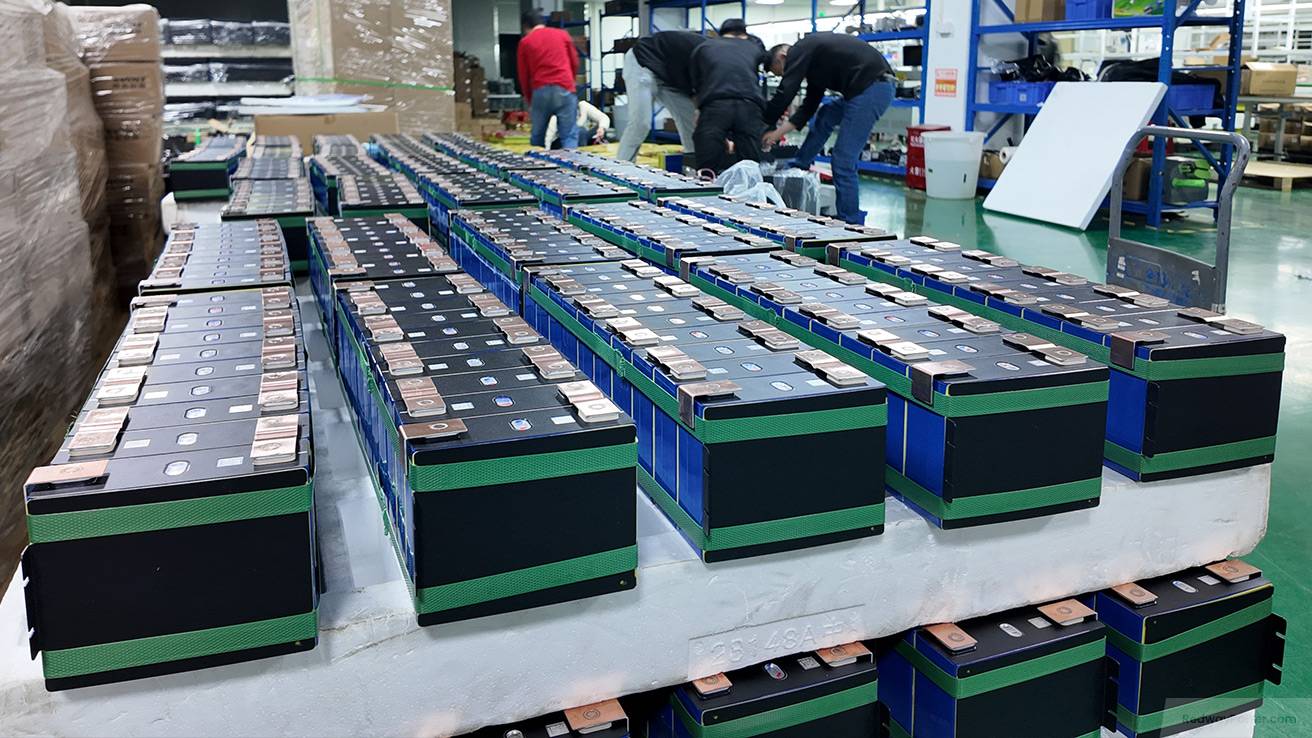Welcome to our battery life blog! In today’s tech-driven world, batteries are crucial for our gadgets and vehicles. Wondering how to make them last longer? We’ve got tips to help you understand factors affecting battery lifespan and extend their longevity. Let’s dive in and keep those power-packed cells humming!
Factors That Affect Battery Lifespan
Understanding the key factors influencing battery lifespan is essential for optimizing their longevity. Let’s explore these factors and discover practical tips for ensuring your batteries last as long as possible.
- Usage Patterns: Frequent complete drains before recharge can significantly reduce battery capacity over time. Adopting regular charging cycles helps maintain optimal performance.
- Temperature Impact: Exposure to extreme temperatures can negatively affect battery life. Avoid subjecting your batteries to harsh conditions to ensure prolonged functionality.
- Battery Type and Quality: Different batteries have varying lifespans. Opt for high-quality batteries from reputable manufacturers to enhance overall durability.
- Storage and Handling: Proper storage in cool, dry environments prevents degradation. Avoid physical damage and moisture exposure, promoting a longer battery life.
- Power-Saving Features: Devices with built-in power-saving options help minimize unnecessary energy consumption. Adjusting screen brightness and utilizing sleep mode when idle are effective practices.
By incorporating these tips into your battery care routine, you’ll maximize their lifespan, providing extended usage without the constant worry of replacements. Remember, taking care of your batteries ensures they take care of you!
Tips For Prolonging Battery Life
Taking care of your batteries involves simple yet effective practices. Let’s explore tips for extending battery lifespan:
- Proper Storage and Handling: Store batteries away from extreme temperatures and moisture, preventing potential damage. Keep them clear of metal objects to avoid short circuits.
- Avoiding Extreme Temperatures: Maintain a moderate temperature range for devices and batteries. High temperatures accelerate chemical reactions, while extreme cold slows them down, impacting battery performance.
- Regular Charging Cycles: Contrary to belief, lithium-ion batteries benefit from regular partial discharge and recharge cycles. Avoid fully draining the battery before recharging to promote overall health.
- Utilize Battery-Saving Features: Take advantage of energy-saving features in electronic devices. Adjust screen brightness, enable power-saving mode, and close unnecessary background apps for extended battery life.
By incorporating these tips into your battery care routine, you’ll ensure optimal performance and longevity, making the most out of your electronic devices.
A. Proper storage and handling
Proper storage and handling are vital for extending your battery’s lifespan. Here are essential tips:
- Storage Conditions: Store batteries in a cool, dry place away from direct sunlight and extreme temperatures to prevent damage from overheating or freezing.
- Handle with Care: Avoid dropping or applying excessive force to batteries to prevent internal damage that could shorten their lifespan. Keep battery contacts clean for optimal performance.
- Avoid Inactivity: Charge spare batteries to around 50% before prolonged storage to maintain overall health during periods of inactivity.
- Use the Right Charger: Ensure you use the correct charger for your battery type, as different batteries require specific charging methods and voltages. Using an incompatible charger may harm battery life.
By following these straightforward steps, you’ll significantly enhance your battery’s longevity and performance when you need it most.
B. Avoiding extreme temperatures
Extreme temperatures, whether hot or cold, can significantly impact your battery’s lifespan. Here’s how to avoid subjecting your battery to such extremes:
- Optimal Storage: Store batteries in a cool, dry place away from direct sunlight or heat sources to prevent accelerated deterioration. Keep devices out of hot cars or freezing environments for optimal battery health.
- Mindful Device Usage: In extreme temperatures, avoid pushing devices beyond their limits. For instance, in sub-zero temperatures, minimize smartphone usage and keep the device close to your body for warmth.
- Smart Charging Practices: Refrain from charging devices exposed to extreme temperatures, whether outdoors during winter or under direct sunlight in summer. This simple precaution helps maintain battery health and ensures uninterrupted daily usage.
C. Regular charging cycles

Regular charging cycles are vital for your battery’s longevity, but the approach matters. Here’s a concise guide:
- Smart Charging Habits: Charge your device when it reaches 20-30% and unplug it around 80-90%. This partial discharge-recharge cycle helps maintain overall battery capacity and health.
- Avoid Overcharging: Never leave your device plugged in overnight or for extended periods after it’s fully charged. Overcharging stresses the battery and shortens its lifespan.
- Choose Quality Chargers: Opt for high-quality chargers designed for your devices. Cheap or counterfeit chargers may provide inconsistent power flow, negatively impacting battery performance over time.
Incorporating these practices into your routine ensures your batteries last longer and perform optimally for extended periods.
D. Using battery-saving features on devices
Using your device’s battery-saving features is a savvy strategy for extending battery life. Let’s dive into the essentials:
- Battery Saver Mode: Activate the “battery saver” mode to automatically tweak settings like brightness, CPU performance, and background app activity. This reduces unnecessary energy consumption, making your device last longer between charges.
- Manual Screen Brightness: Lowering screen brightness manually not only saves battery but also reduces eye strain. Disabling auto-brightness prevents constant adjustments based on ambient lighting.
- Manage App Permissions: Review and restrict background data usage by managing app permissions. Many apps run in the background, consuming resources. Utilize built-in app restriction tools to prevent unnecessary battery drain.
- Disable Unused Connectivity: Turn off Bluetooth or Wi-Fi when not needed to extend battery life. These features consume power even when idle or searching for connections.
- Close Unused Apps: Running multiple apps simultaneously strains the processor and drains the battery faster. Closing unused apps conserves energy.
By incorporating these practices into your daily device usage, you’ll significantly enhance battery longevity between charges.
How Do I Keep My Lithium-Ion Battery Healthy?
Maintaining the health of your lithium-ion battery is crucial for ensuring optimal performance and longevity. Here are some essential tips to help you keep your lithium-ion battery healthy:
- Use Partial Discharge Cycles:
- Avoid frequent deep-cycling of lithium-ion battery packs. Instead, utilize only 20 or 30 percent of the battery’s capacity before recharging to prolong its lifespan.
- Avoid High Charge and Discharge Currents:
- High charging and discharging currents can significantly reduce the cycle life of lithium-ion batteries. Opt for moderate currents to minimize strain on the battery.
- Avoid Very Deep Discharges:
- Extremely deep discharges can irreversibly damage lithium-ion batteries, leading to internal short circuits. Avoid discharging the battery below critical voltage levels to prevent harm.
- Limit the Battery Temperature:
- Minimize exposure to temperature extremes, especially charging below 0°C, to enhance battery health. Charging at low temperatures can induce metal plating and internal short circuits.
- Avoid Charging to 100% Capacity:
- Lower the float voltage when charging lithium-ion batteries to extend cycle and lifespan. A slight decrease in float voltage can significantly improve battery longevity without sacrificing capacity.
- Avoid Overcharging:
- Prevent overcharging by avoiding continuous voltage supply after the battery reaches full charge. Overcharging can accelerate irreversible capacity loss and induce internal short circuits.
- Avoid High Moisture:
- Keep lithium-ion batteries away from high-moisture environments to prevent damage to their life and performance.
- Use an Appropriate Battery Charger:
- Utilize a charger designed specifically for lithium-ion batteries, preferably the one that came with your battery. Chargers with lower float voltages and appropriate charge termination mechanisms can help extend battery life.
By following these tips, you can effectively maintain the health of your lithium-ion battery, ensuring optimal performance and longevity for your devices.
Common Myths About Extending Battery Life
Alternative Power Sources To Consider
Discovering alternatives to traditional batteries can be both eco-friendly and efficient. Consider these options:
- Solar Power:
- Utilize solar panels to capture clean energy from the sun, providing a renewable source to charge your devices.
- Wind Power:
- In areas with consistent wind patterns, a small wind turbine can generate electricity, especially beneficial for powering larger devices or appliances.
- Power Banks:
- Portable power banks store energy for on-the-go charging, ensuring you have a backup when traditional charging methods aren’t available.
- Fuel Cells:
- Advanced fuel cell technology converts hydrogen or other fuels into electrical energy without combustion, offering a greener power generation option.
- Wireless Charging:
- Many smartphones support wireless charging, allowing you to charge your device by placing it on a compatible wireless charger pad.
By exploring these alternatives, you not only reduce your reliance on traditional batteries but also contribute to a cleaner and more sustainable future. While batteries are essential, adopting these practices can help maximize their lifespan and minimize environmental impact.
How Can You Avoid Charging Lithium Batteries To 100% Capacity?
Avoiding charging lithium batteries to 100% capacity is essential for prolonging their lifespan and optimizing their performance. Here’s how you can achieve this:
Adjust the Float Voltage
Lowering the float voltage can help prevent lithium batteries from reaching full capacity during charging. This adjustment significantly improves the battery’s cycle life and longevity, albeit at the expense of some capacity.
Utilize Partial Discharge Cycles:
Instead of fully depleting the battery before recharging, aim to utilize only 20-30% of its capacity before plugging it in. This practice helps maintain overall battery health and extends its lifespan.
Avoid Overcharging
Never leave your lithium battery plugged in overnight or for extended periods after it has reached full charge. Overcharging can stress the battery and lead to premature degradation.
Choose Quality Chargers:
Opt for high-quality chargers specifically designed for lithium batteries. Cheap or counterfeit chargers may provide inconsistent power flow, which can negatively impact battery performance over time.
Monitor Charging Habits
Be mindful of your charging habits and unplug the device once it reaches around 80-90% charge. This prevents unnecessary stress on the battery and helps maintain its longevity.
By implementing these strategies, you can effectively avoid charging lithium batteries to 100% capacity, ensuring prolonged battery life and optimal performance for your devices.
How Does Storage Affect The Lifespan Of Lithium Batteries?
Proper storage and handling play a crucial role in preserving the lifespan of lithium batteries. Storing these batteries in cool, dry environments can help prevent degradation over time. Additionally, it is important to avoid physical damage and exposure to moisture, as these factors can contribute to a longer battery life.
Moreover, ensuring that the batteries are stored with some charge, ideally between 50 to 60 percent, can help prevent self-discharge from reaching critical levels. This practice can extend the battery’s longevity and overall performance.
Temperature considerations are also paramount when storing lithium batteries. While these batteries can tolerate extreme cold temperatures, high temperatures can pose a risk to their lifespan. Therefore, it is advisable to store them in environments with moderate temperatures to maintain their health.
Furthermore, it is recommended to avoid storing lithium batteries in a completely full or empty state to prevent accelerated degradation. By maintaining a moderate charge level during storage, users can enhance the longevity of their batteries.
Lastly, disconnecting all cables when storing batteries for an extended period is essential to prevent any potential discharge or damage. By following these storage guidelines, users can ensure the optimal performance and lifespan of their lithium batteries.
How Can One Keep A Lithium-ion Battery Healthy And Maintain Its Lifespan?
Taking care of your batteries involves simple yet effective practices. Let’s explore tips for extending battery lifespan:
Proper Storage and Handling: Store batteries away from extreme temperatures and moisture, preventing potential damage. Keep them clear of metal objects to avoid short circuits. Additionally, it is crucial to understand the economic and environmental consequences of new battery manufacture and disposal. Extending battery life not only benefits the user but also reduces raw material consumption, extraction impacts, and greenhouse gas emissions.
Avoiding Extreme Temperatures: Maintain a moderate temperature range for devices and batteries. High temperatures accelerate chemical reactions, while extreme cold slows them down, impacting battery performance. By utilizing only 20 or 30 percent of the battery’s capacity before recharging, you can greatly improve battery life and contribute to environmental sustainability.
Regular Charging Cycles: Contrary to belief, lithium-ion batteries benefit from regular partial discharge and recharge cycles. Avoid fully draining the battery before recharging to promote overall health. It is equally important to avoid high charge and discharge currents, as they can reduce the cycle life of the battery and put unnecessary strain on its components.
Utilize Battery-Saving Features: Take advantage of energy-saving features in electronic devices. Adjust screen brightness, enable power-saving mode, and close unnecessary background apps for extended battery life. Remember that extremely deep discharges can irreversibly harm a Li-ion battery, leading to internal shorting and potential hazards. By following these tips and understanding the broader impact of battery care, you can ensure optimal performance and longevity of your lithium-ion batteries.
FAQs
How should you manage the discharge of lithium batteries?
To effectively manage the discharge of lithium batteries, it is advisable to recharge them before they are completely depleted. Avoiding complete discharge helps extend the battery’s lifespan. When preparing to store lithium batteries for a period of time, it is recommended to do so at around half charge, typically at a depth of discharge (DOD) of 40%-50%. Unlike some other types of batteries, lithium batteries do not require recharging throughout storage and perform better when stored at half charge.
Additionally, it is beneficial to allow lithium-based batteries to fully discharge after every 30 charges. This practice can help prevent digital memory issues, which could impact the accuracy of the power gauge on the device being used. Allowing the battery to completely discharge periodically enables the power gauge to reset and function accurately.
Why should lithium-ion batteries not be stored in high-moisture environments?
Lithium-ion batteries should not be stored in high-moisture environments because excessive moisture can have negative effects on their lifespan and functioning. The presence of high levels of moisture can lead to corrosion and damage to the battery components, which may reduce its overall performance and durability. Therefore, it is crucial to avoid exposing lithium-ion batteries to high levels of moisture to ensure they operate efficiently and remain in good condition over time.
Do lithium batteries need to be cycled for optimal performance?
Yes, cycling lithium batteries can indeed be beneficial for optimizing their performance and extending their lifespan. When lithium batteries are regularly cycled within specific charge levels, such as not charging them to 100% or draining them to 0%, but rather maintaining a charge level between 25% and 85%, it may help reduce capacity loss over time. By avoiding extreme highs and lows in charge levels during each cycle, lithium-ion batteries can operate more efficiently and sustain their capacity for a longer period. Cycling between certain charge percentages, such as 75% to 65%, may help minimize capacity loss and contribute to the overall health and performance of lithium batteries.
What is the difference between deep and shallow charging of lithium batteries?
Deep lithium battery charging involves allowing the battery to discharge significantly, usually below 50%, before recharging. This method is designed to optimize the battery for long-term use by ensuring that it can manage extended periods of operation before requiring a recharge. On the other hand, shallow charging involves providing short bursts of energy without allowing the battery to discharge deeply before recharging. This method is suitable for devices that need quick energy boosts but are not intended for prolonged use without being fully charged. The key distinction lies in the discharge levels: deep charging involves significant discharge, while shallow charging focuses on short bursts of energy.
What role does a battery charger play in increasing battery lifespan?
A battery charger plays a crucial role in increasing battery lifespan by utilizing float voltage and charge termination mechanisms effectively. For instance, chargers with lower float voltages, such as 4.1V or 4V, can help extend the life of Li-ion batteries. Additionally, chargers incorporating minimum charge-current termination techniques can optimize the charge-current threshold to further enhance battery longevity. By selecting the appropriate float voltage and charge termination methods, battery chargers can significantly contribute to prolonging the lifespan of batteries.
What are the consequences of overcharging a battery?
Overcharging a battery can lead to detrimental effects, including irreversible capacity loss, interior metal plating, internal short circuits, overheating, and instability. When a battery is charged to a higher voltage than necessary, it can accelerate the loss of its capacity. Continuously supplying voltage to a fully charged battery is not recommended as it may induce metal plating inside the battery, potentially causing internal short circuits. This can result in overheating and make the battery unstable, posing safety risks.
How many cycles can you typically get out of a lithium-ion battery?
Typically, a lithium-ion battery can typically withstand around 300 to 500 charge cycles, with an average lifespan of 2 to 3 years. However, this can vary based on usage patterns, as a charge cycle involves fully charging the battery, depleting it completely, and then recharging it in full. While most lithium-ion batteries may last longer than the minimum stated cycles, sometimes surviving up to 10-15 years, their capacity to retain a charge gradually diminishes over time. This aging process results in a reduction in the battery’s ability to power the device it is used for, affecting its overall runtime. Contrary to cheaper lead-acid batteries that usually last 5 to 7 years, rechargeable lithium-ion batteries tend to preserve their charging capacity for a longer duration, making them a more durable option.
Is it okay to leave a lithium-ion battery on the charger?
Incorporating these practices into your routine ensures your batteries last longer and perform optimally for extended periods. Avoid overcharging: Never leave your device plugged in overnight or for extended periods after it’s fully charged. Overcharging stresses the battery and shortens its lifespan. To further elaborate, it is advisable to adhere to a constant current, constant voltage, or CC/CV charging profile when charging lithium-ion batteries. By setting the correct voltage limit and maintaining the appropriate charging threshold, you can ensure a safe and complete charge for your battery without causing undue stress or damage.








